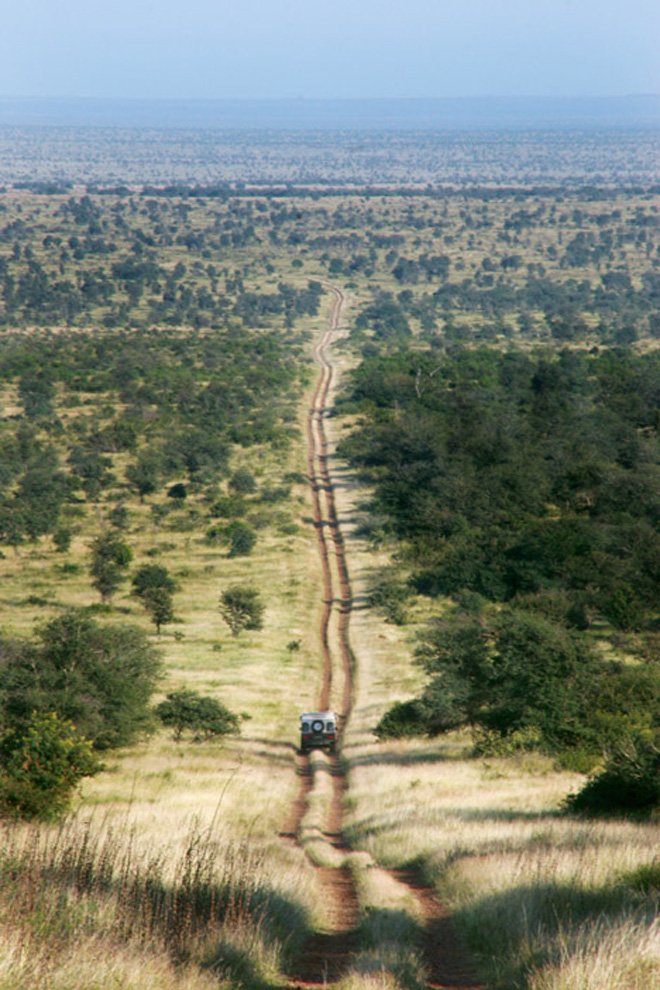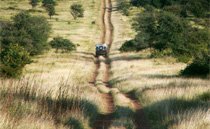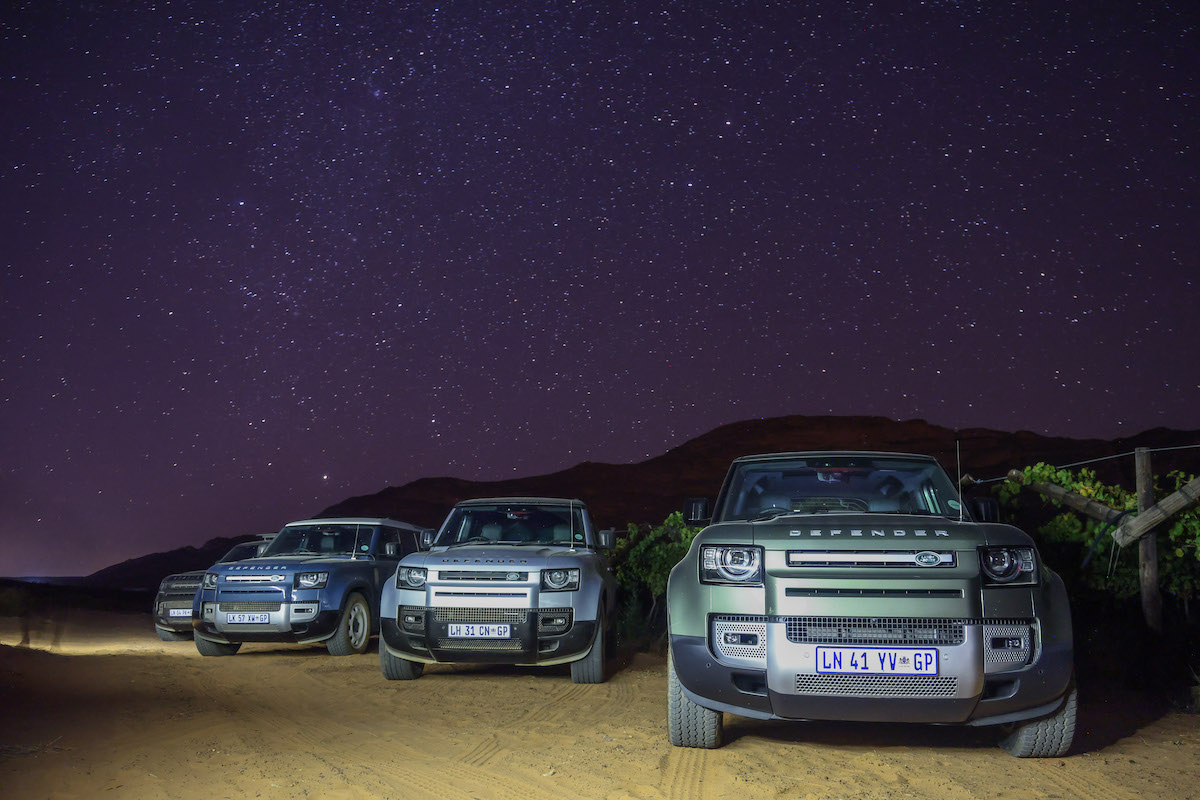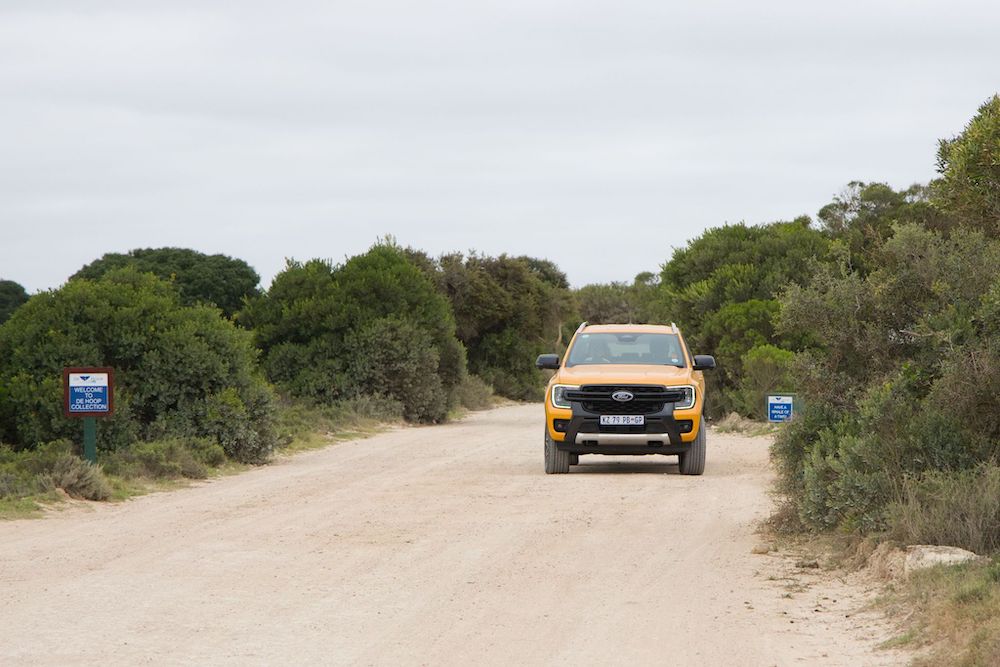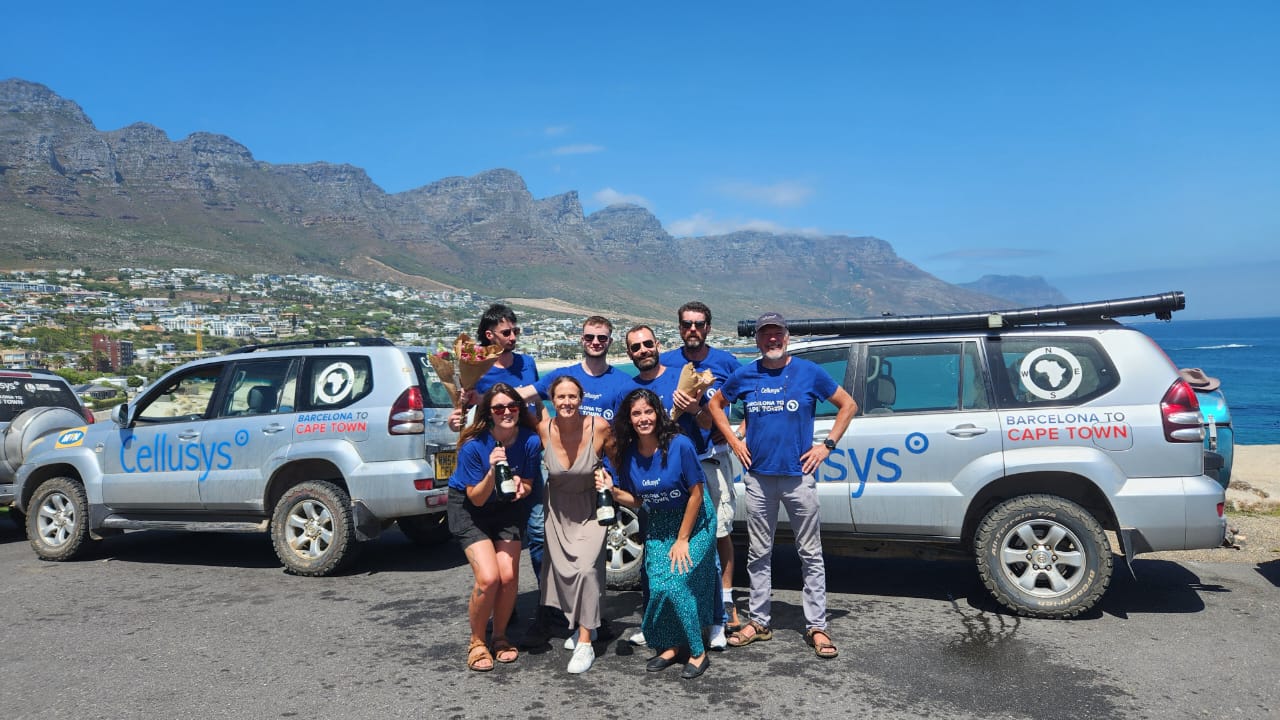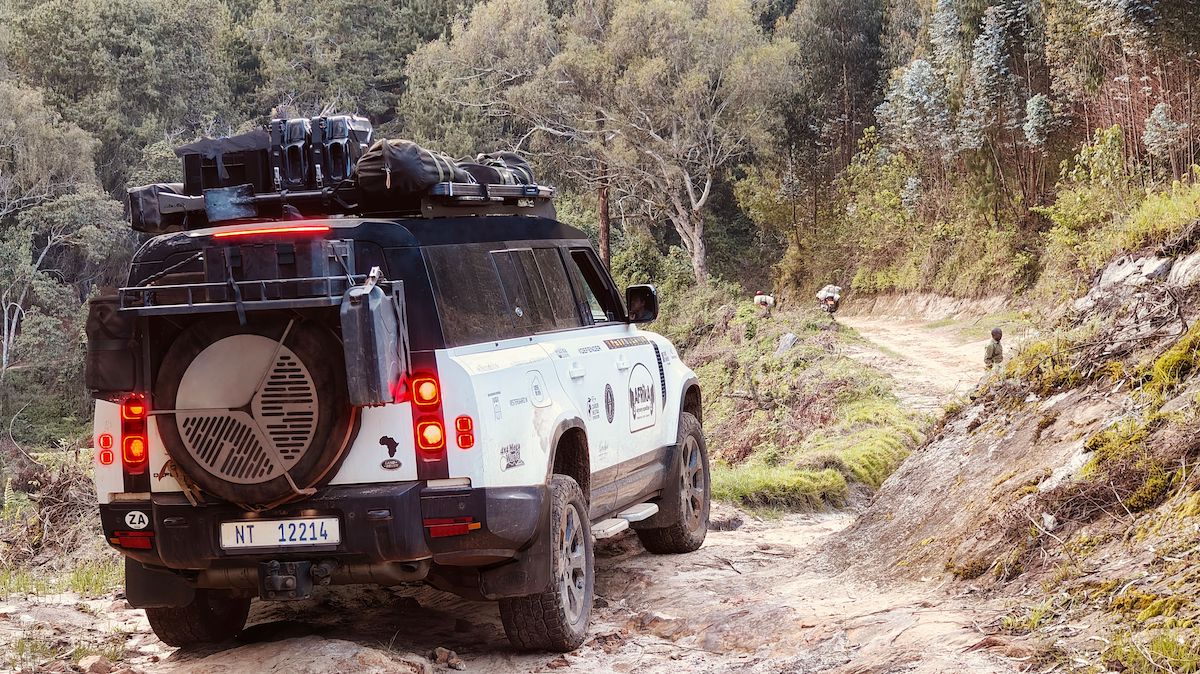The usually calm and happy voice of our tour guide, Andre Mabunda, suddenly exploded over the two-way radio: “Quick! Everybody… come, we’ve got lions!”
You would not expect a hardened Kruger National Park game ranger to get this excited on a game drive in South Africa’s premier game reserve. After all, he has seen it all and most visitors have come across lion in or on the side of tourist roads.
But this is different. This is the Lebombo Eco Trail: a five day game drive within a game drive. What you see on this trip is far more rewarding. But most of all, you are helping in a small but direct way in the ongoing fight against poaching. Having a former member of the anti-poaching unit as your guide provides a disturbing perspective on this issue.
Luckily, the 500km safari on the wild side of the Kruger is about having fun. Ignoring “no entry” signs and getting out of your vehicle to look around or to go for short walks with your armed guide make this a worthwhile journey. As the route roughly follows the country’s eastern fence line, which in turn runs on top of the Lebombo mountains from Komatipoort in the south towards the Limpopo river and Crookes Corner in the north, it offers an uncompromising bush camping experience.
The trip is so well-balanced between roughing it and having all the luxuries just down the road that it provides the perfect introduction to aspiring wilderness campers. A novice camper in our group, young intern biokineticist Claire Kelty from Johannesburg, said: “The experience of camping in the middle of the park with no fences absolutely wowed me…I am now proud to say I love camping!”
You may not, as is the case with camping at one of the major camps, hear the soothing voice of the mourning dove following the shrill call of the fish eagle, or the breathless, almost hysterical giggle of the mating tree squirrel, but you know there is nothing between you and what is out there. The psychological effect of this, combined with clean air, is the most wonderful remedy for the habitual worrier of the city lifestyle.
Since its opening in 2001, the Lebombo trail has become perhaps the most civilized overland trip for campers. When you are not flirting with the Mozambican bush, you can shop for important consumables like cold beer, biltong, ice and wonderful firewood, and also have a shower or even a splash in the swimming pool of the Olifants and Shigwedzi camps when your little convoy travels through them in the hot months. These detours are necessitated by the trail being cut off by the Olifants river gorge and the Sabie river where it runs into the Corumana dam in Mozambique.
In an effort to help our readers understand what the Lebombo trail is all about and what it offers, this article will draw on comparisons between an earlier trip after the wet season and a recent visit at the end of the dry season.
The route still varies from a straight to meandering tweespoor, in places rocky but mostly very easy. On the trail you will find mopane, false mopane, red bushwillow, leadwood, knob and umbrella thorn, savannah and sandveld. On my previous visit in the month of May three-and-a-half years ago the bush was thick and the temperatures pleasant. We did not see a lot of animals.
This time around our daily distances were (with the previous trip in brackets) 91km (83km), 127km (125km), 125km (111km), 105km (119km) and 52km (58km). Some convoys may travel more than 140km in a day.
On my second visit we travelled through large areas that resembled the aftermath of a nuclear explosion, the dry earth burned black because of fires that started in Mozambique on spring day. Travelling very slowly in heat of 37 degrees can be uncomfortable, but we spotted many, many more animals than previously. On both occasions almost all sightings were in the southern half of the Kruger.
In this area the Corumana and Massingir dams in the Olifants have become controversial conservation issues due to the fact that their raised walls will have a serious impact on the Kruger’s aquatic wildlife.
In the dry season we had seen cheetah and lion within 24 hours of starting the trip at Crocodile Bridge camp. We also saw more white rhino and buffalo than we had ever seen before in the Kruger.
Also, the birdlife was prolific, and we were helped by the fact that we were with a very knowledgeable group of birders and honorary game rangers. They ticked off, to name but a few out of the 120 plus, kori bustard, martial eagle, Wahlberg’s eagle, dark chanting goshawk, southern ground hornbill, saddle billed stork, Senegal lapwing, black headed oriole, brown headed parrot, orange breasted shrike, African grass owl and pearl spotted owl.
It is not only the two Mozambican dams that are causes for concern: In the south white rhinos are being killed at an alarming rate by poachers from across the border. At our Pumbe campsite on the northern side of the Sabie river, after a rocky ride on day two, Andre told us that some of the killings had taken place nearby.
“Rangers do get special rewards,” he said. “But only when they catch a poacher with a rifle or with rhino horn.”
We were near the border, where a steel cable and chicken-wire fence has replaced the cable and netted/barbed wire that runs the first 30km from Komatipoort. We were probably in the middle of field rangers’ ambushes and poachers lying in wait for their next victim. We heard, far-off, spotted hyena, but the nights were as quiet as they were all those years ago.
That night, when the fire was going well, I asked our guide about the effect the trail may have on poaching.
“Every convoy that uses the trail is also patrolling the area and checking the fence,” Andre said. “But we do have a serious problem here and more trails per week would go a long way in helping the field rangers. At the moment we have only one vehicle, sponsored by Nissan South Africa. The poachers know when we’re coming. We need three trips a week to be more effective.”
The next day we stopped at a hole in the fence where a poacher had set his trap: a noose made from thin steel cable tied to a loose tree stump. Any animal getting his neck into this would have no chance.
I also wanted to know from Andre why and how he was using a different route from the one that we took on my previous visit. In 2006 our convoy had stuck to the fence-line most of the way, and we were able to see where the fence was dropped to allow animals to walk over to Kruger’s sister park, Parque Nacional Do Limpopo.
“Of course people have complained about driving in a straight line for hundreds of kilometres. We as trail rangers were told to use our discretion and mix it up by also using the sisal line. It also depends on the group.
For instance: what would people like to do and are they towing caravans and trailers?”
The trail is not really a 4×4 route, so there is absolutely no danger of people’s egos causing friction within the convoy.
On my last visit we saw only part of the sisal line, which is still visible. When it was first initiated, it was supposed to be the perfect obstacle against illegal immigrants from Mozambique. But elephants, in particular, took to it with an insatiable appetite and all that is left is a grassy strip that runs a couple hundred metres or more parallel to the border.
More than three years ago we spotted elephant and giraffe on the Mozambique side in the southern wilderness area that was kept fenced-off from the rest of Do Limpopo to keep animals safe. Near Shilowa, where the trail’s third and highest campsite lies just south of the Tropic of Capricorn, the border fence allows antelope to cross. About 300km from Komatipoort the whole fence has been dropped, reappearing in the far north.
While we did not stop on the concrete bridge across the Letaba for brunch this time around, due to the heat, we found a lovely shaded spot under false marula, jackal berry and apple leaf trees on the banks of the almost dry riverbed of the Shingwedzi further north. From there we
spent a very hot hour-and-a-half driving 20km to Shingwedzi camp. By now we had become used to the Shangaan call-signs that Andre had given us at the start of the trail: xibejane (rhino), nyarhi (buffalo), yingwe (leopard), ngala (lion) and ndlofu (elephant). He himself is Xidzidzi (honey-badger).
It was a couple of hours later, while trekking back towards the borderline for our last overnight stop at Ndzopufuri, that the most shocking difference between then and now was experienced. What used to be the highlight of the Lebombo trail for many is no more.
In the past, the convoy would set up camp and then drive more than 10km back to Langtoon dam for sundowners and to watch animals also coming for a drink. This had the added value of a night drive back to camp. Now there is nothing, because the dam wall in the Nkulumbeni river has been bulldozed as part of Kruger’s water management plans to save the surrounding overgrazed habitat.
The bony carcass of a rhino that got stuck in the mud, the skeletal head of a buffalo and barbel committing suicide by coming out of hibernation too soon through the cracks in the baked mud…
A travelling companion, Michael Porter, summed it up best: “The eeriness of a spot that once was so full of life suddenly being so full of death was very strange to grasp, but a magic experience.”
According to Andre, “most manmade watering holes that are not on tourist routes have been stopped”.
The next day, our last on the trail, brought us to the twin power lines from Cahora Bassa – and yet another very unsettling tale from our guide.
“You have heard about Mozambicans crossing unlawfully into our country,” he said while showing us a gaping hole in the wire netting of the fence. The golden strands from a lion’s hide were still stuck to it.
“The people follow the power lines (they are a kilometre apart) to keep direction. They use the vehicle tracks that run alongside the pylons, but lion have become used to this and have been ambushing them. The people are easy prey, so now lions would actually crawl to the Mozambican side to ambush them.
“The problem is that the same lions are also targeting our field rangers while they are trying to ambush the poachers. So the lions have to be shot… a very unfortunate situation.”
And so, after travelling across hills that resemble the plantations of Kaapschehoop, the trail ends at Crooke’s Corner, where the Luvuvhu river joins the Limpopo and where birders always have a ball.
Then the inevitable: It was time to say goodbye to our guide and some companions at the Pafuri picnic area, an even better birding spot. Three-and-a-half years ago, this picnic area was so full that our guide took us onto a wilderness trail to have brunch under an nyala tree.
This time around, Andre Mabunda, a lanky Shangaan, had spoiled us in his own way: his relaxed way of doing things, a lovely sense of humour and knowledge as a walking guide had brought the bush nearer to us city dwellers. Andre is old school: When using his radio to tell us where to turn, he would say, in true drill sergeant style: “Afdeling, r-e-e-e-e-g-s om!” He even brought his wife along, and the words he used most on this trip were “iNkomo swinene”. It means “thank you very much” and reflects on just how much this particular group had enjoyed the Lebombo Eco Trail.
INFO BOX
#With only five vehicles being allowed per trip, it is essential to book in advance -? especially if you are planning a group booking. If you are on your own, phone in the morning to find out about cancellations. The trail opens in April and closes in October.
#A maximum of 20 persons (4 persons per vehicle) are allowed. No persons over the age of 65 and under 12 will be allowed.
#You have to sign an indemnity form before the trail starts at midday on a Sunday. To make it easier on yourself (i.e. driving from Gauteng) you can leave home the day before and sleep over at Crocodile Bridge camp or Malelane river cottages about 50km away and still shop and get fuel at Komatipoort.
#You have to pay a conservation fee, which may run up to a couple of hundred rand, and more if you are staying on afterwards. Get yourself a Wild Card – we saved R160 for two people’s seven night visit.
#On the trail you will sleep at Mndolozi, Pumbe, Shilowa and Ndzopufuri campsites. There are clean longdrop toilets at all the campsites, while the first camp has a bucket-shower. You have to use your own water.
#It is a lot of driving. Regular stops leave you with less time to make camp. Do not put unnecessary pressure on your guide – a relaxed guide is a good and more effective guide. Make sure convoy order changes daily.
#You do not need to carry extra fuel; we did the whole trip and more on a Nissan Navara’s one tank. Or you can fill up at Lower Sabie, Olifants or Shigwedzi camps. Punda Maria is near the end of the trail.
#Although this is not a real 4×4 route, there are some slow climbs for which low range is essential if you are towing. Wet weather could make the route more interesting. You can take your passport and hop across the border at Pafuri afterwards to have a picnic and do some 4×4-ing in the dry Limpopo.
#If you are camping (in a tent), keep it simple and easy, since late arrivals and early morning starts are the order of the day.
#This is a completely self-catering safari, but not a real overland trip. Do not take too much stuff. The focus is on supper and day time snacking. You will have time for coffee and rusks or muesli and on some days you may stop for brunch. Take turns to cook supper ? people try to outdo each other and you eat like a king.
#Take just enough water for two days’ drinking and dishwashing.
#Depending on your timing, malaria prophylaxis may be needed.
Booking and Tariffs
Booking and tariff enquiries should be directed to Hesther van den Berg on 012 426-5117.
